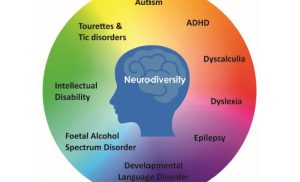Breaking The Cycle Of Homelessness: Mental Health Solutions
You have heard about the issue of homelessness countless times, but have you ever considered the powerful connection between mental health and homelessness? In our article, “Breaking The Cycle Of Homelessness: Mental Health Solutions,” we will explore this complex relationship and shed light on the innovative solutions that hold the potential to break this vicious cycle. From increasing access to mental health resources to providing supportive housing, we invite you to discover how addressing mental health can be the key to transforming the lives of individuals experiencing homelessness.
Understanding the Link Between Homelessness and Mental Health
Homelessness and mental health issues often go hand in hand. Studies have consistently shown a high prevalence of mental health issues among homeless individuals. According to a report by the Substance Abuse and Mental Health Services Administration (SAMHSA), approximately 25% of homeless individuals in the United States have a serious mental illness, such as schizophrenia, bipolar disorder, or major depressive disorder. This is significantly higher than the prevalence of mental health issues in the general population.
The impact of mental health on homelessness is multifaceted. Mental illness can contribute to the risk of homelessness through various factors, such as impaired social and work functioning, difficulty maintaining stable relationships, and challenges in managing daily tasks. Conversely, the experience of homelessness can exacerbate existing mental health issues or even trigger the onset of new ones. The stress and uncertainty of living on the streets, coupled with the lack of access to basic needs and healthcare services, can lead to the development or worsening of mental health conditions.
This link between homelessness and mental health forms a cyclic relationship. Homelessness increases the risk of mental health issues, and conversely, untreated or poorly managed mental health conditions can perpetuate or escalate homelessness. Breaking this cycle requires a comprehensive approach that addresses both the mental health needs of homeless individuals and the underlying factors contributing to homelessness.
Challenges in Addressing Mental Health Among Homeless Individuals
Addressing mental health among homeless individuals is fraught with several challenges. First and foremost, limited access to healthcare services poses a significant barrier. Homeless individuals often struggle to obtain regular and adequate medical care, including mental health services. Lack of health insurance, transportation, and proximity to healthcare facilities further compound these barriers. As a result, many homeless individuals remain undiagnosed, untreated, or undertreated for their mental health conditions.
Stigma and discrimination also play a significant role in hindering access to mental healthcare for the homeless population. Homelessness is often associated with negative stereotypes and assumptions, which can lead to the avoidance of homeless individuals or the denial of equal treatment. The stigma surrounding mental health issues amplifies this discrimination, making it even more challenging for homeless individuals to seek help and support.
Another critical challenge is the lack of affordable housing. Homeless individuals with mental health issues often find it difficult to secure stable housing due to various reasons, including financial barriers, lack of supportive services, and discrimination by landlords. Without access to safe and affordable housing, it becomes challenging for homeless individuals to stabilize their mental health and work towards reintegrating into the community.
Substance abuse and co-occurring disorders also pose significant challenges in addressing mental health among the homeless population. Substance abuse and mental health issues often coexist and mutually reinforce each other. Homeless individuals may turn to substances as a means of self-medication or coping with the challenges of homelessness, exacerbating their mental health conditions. Moreover, the presence of co-occurring disorders complicates the treatment process, requiring specialized care and comprehensive interventions.
Additionally, trauma and its effects on mental health are prevalent among the homeless population. Many homeless individuals have experienced traumatic events, such as physical or sexual abuse, domestic violence, or combat exposure. These traumatic experiences can lead to the development of post-traumatic stress disorder (PTSD), which further exacerbates mental health issues and makes it more challenging to break free from the cycle of homelessness.
Integrated Approach: Key to Breaking the Cycle
Effectively addressing the mental health needs of homeless individuals requires an integrated approach that combines mental health services with comprehensive support and interventions. Collaborative efforts between mental health services and homeless service providers are essential in creating a system that can adequately support homeless individuals with mental health issues. This collaboration fosters the sharing of resources, expertise, and knowledge to better meet the complex needs of this vulnerable population.
Providing comprehensive support is crucial to addressing the multifaceted challenges faced by homeless individuals with mental health issues. In addition to mental health services, homeless individuals may require access to basic needs such as food, clothing, and hygiene facilities. Supportive services that assist with securing employment, vocational training, and financial assistance can also help individuals reintegrate into society and achieve stability.
Early identification and intervention are paramount in preventing the escalation of mental health issues among homeless individuals. Screening and assessment for mental health disorders should be integrated into homeless service programs to identify individuals who may require immediate intervention or treatment. Timely and appropriate interventions can help prevent the worsening of mental health conditions and reduce the likelihood of homelessness.
Improving access to mental health services is a critical component of breaking the cycle of homelessness. Outreach programs, mobile clinics, and telehealth services can help bridge the gap in access to care for homeless individuals residing in underserved areas. Collaboration with community stakeholders and policymakers is essential in advocating for increased funding and resources for mental health services specifically tailored to the needs of homeless individuals.
Addressing the Mental Health Needs of Homeless Individuals
To effectively address the mental health needs of homeless individuals, a multidimensional approach is necessary. This approach should encompass screening and assessment, individualized treatment plans, medication, therapy, supportive housing programs, employment and vocational training, as well as peer support and community integration.
Screening and assessment for mental health disorders should be a standard practice within homeless service programs. This allows for early identification of mental health issues and enables the development of individualized treatment plans tailored to each person’s unique needs. These treatment plans should consider the severity and type of mental illness, as well as any co-occurring substance abuse disorders or trauma-related conditions.
Psychiatric medications and therapy play crucial roles in managing mental health conditions among homeless individuals. Medication can help stabilize symptoms and improve overall well-being, while therapy provides a safe space for individuals to address their challenges, develop coping strategies, and work towards recovery. Culturally sensitive and trauma-informed therapies are particularly important when working with homeless individuals, considering their unique backgrounds and experiences.
Supportive housing programs are instrumental in supporting homeless individuals with mental health issues. By providing stable and supportive housing environments, these programs offer individuals the opportunity to stabilize their mental health, establish a sense of security, and work towards reintegrating into society. Supportive housing programs are typically accompanied by case management, which helps individuals navigate community resources, improve life skills, and address any barriers to housing stability.
Employment and vocational training programs are crucial in empowering homeless individuals with mental health issues to regain independence and self-sufficiency. These programs provide individuals with the necessary skills and opportunities to secure employment, enhance their financial stability, and improve their overall well-being. By empowering individuals to become self-supporting, these programs reduce the risk of homelessness and promote long-term mental health stability.
Peer support and community integration are essential components of addressing the mental health needs of homeless individuals. Peer support programs, where individuals with lived experiences mentor and guide others through their recovery journeys, have shown tremendous efficacy in promoting engagement and improving outcomes for homeless individuals with mental health issues. Creating inclusive and supportive communities that embrace homeless individuals and reduce social isolation is crucial for their overall well-being and successful reintegration.
Preventing Homelessness through Mental Health Services
While addressing the mental health needs of homeless individuals is vital, it is equally important to implement preventive strategies that can potentially mitigate the risk of homelessness.
Identifying at-risk populations is an essential step in prevention. By identifying individuals or groups who may be at higher risk of homelessness due to mental health issues, proactive interventions and support can be provided early on, aiming to prevent the escalation to homelessness. Targeted outreach, screening programs, and collaborations with other service providers can aid in identifying these at-risk populations.
Early intervention programs play a significant role in preventing homelessness among individuals with mental health issues. By providing timely and appropriate interventions, such as counseling, therapy, and case management, individuals can receive the necessary support to address their mental health challenges before they escalate to a point where homelessness becomes inevitable. These programs should be readily accessible, culturally sensitive, and tailored to individual needs.
Mental health education and awareness are vital in preventing the stigmatization of mental illness and fostering a compassionate and understanding society. Educational programs can help dispel myths surrounding mental health and homelessness, normalize seeking help, and promote early intervention. By increasing public awareness and knowledge about mental health issues, society becomes more empowered to address the needs of individuals at risk of homelessness.
Enhancing coping skills and stress management is an essential preventive measure. By equipping individuals with effective coping strategies, healthy ways of managing stress, and problem-solving skills, the risk of mental health disorders escalating to a point of homelessness can be reduced. Programs that focus on building resilience, self-care techniques, and emotional regulation are crucial in promoting mental well-being and preventing homelessness.
Improving social support networks is another vital aspect of homelessness prevention. By strengthening individuals’ connections to family, friends, support groups, and community resources, the risk of isolation and subsequent homelessness can be mitigated. Community-based initiatives that foster social cohesion, provide opportunities for social engagement, and create supportive environments contribute to long-term mental health stability and prevent homelessness.
Creating Collaborative Partnerships for Effective Solutions
Addressing the complex intersection of homelessness and mental health requires collaborative partnerships between various stakeholders. Effective solutions must involve community-based organizations and service providers, healthcare systems and mental health agencies, government initiatives and funding, as well as private sector and philanthropic organizations.
Community-based organizations and service providers are the backbone of initiatives designed to address homelessness and mental health. These organizations are often rooted in the communities they serve, have intimate knowledge of local needs, and are uniquely positioned to provide targeted and culturally relevant support. Collaborating with these organizations ensures that interventions are tailor-made and effective in addressing the specific challenges faced by homeless individuals with mental health issues.
Healthcare systems and mental health agencies are integral partners in the delivery of mental health services for homeless individuals. By collaborating and coordinating efforts, these entities can ensure that homeless individuals receive the necessary care, including both physical and mental health services. This collaboration also enhances care coordination and reduces fragmentation, leading to improved outcomes and continuity of care.
Government initiatives and funding play a crucial role in supporting programs and policies aimed at addressing homelessness and mental health. Governments at the local, state, and national levels have the power to allocate resources, implement regulations, and initiate programs that prioritize the needs of homeless individuals with mental health issues. Advocacy efforts and partnerships with government entities are essential in advancing the cause, raising awareness, and securing necessary funding.
Engaging the private sector and philanthropic organizations is an important strategy in addressing homelessness and mental health. These entities have the resources and expertise to contribute to innovative solutions, support research and development, and invest in initiatives that promote long-term sustainability. Collaborative partnerships with private sector organizations and philanthropic entities enable the pooling of resources, knowledge, and influence to drive effective change.
Building strong networks and referral systems plays an essential role in ensuring seamless and efficient access to mental health services for homeless individuals. Collaborative partnerships among stakeholders, such as service providers, healthcare systems, community-based organizations, and government agencies, can establish effective referral systems that enable individuals to navigate the complex web of services and receive appropriate care. These networks also facilitate information sharing, coordination, and the provision of comprehensive support.
The Role of Advocacy and Policy Change
Advocacy and policy change are pivotal in driving systemic solutions to address the mental health needs of homeless individuals. To break the cycle of homelessness and mental health challenges, the following steps are crucial:
Creating supportive policies and legislation is essential in tackling the root causes of homelessness and ensuring adequate support for mental health services. Policies and legislation that prioritize affordable housing, increase funding for mental health programs, protect the rights of homeless individuals, and address social determinants of health are critical in creating an enabling environment for effective solutions.
Increasing funding for mental health services specifically tailored to homeless individuals is of utmost importance. Adequate resources are needed to expand access to mental health care, enhance outreach programs, ensure the availability of supportive housing, and train mental health professionals to effectively serve this population. By investing in mental health services, governments and private entities can contribute to breaking the cycle of homelessness.
Reducing barriers to access care is vital in ensuring that homeless individuals with mental health issues can seek and receive appropriate help and support. Policies and programs should focus on eliminating financial barriers through the expansion of affordable healthcare coverage, enhancing transportation options for underserved areas, and increasing the availability of mental health services in areas with high homeless populations. Additionally, addressing stigma and discrimination within healthcare systems and communities is crucial in creating an inclusive and accessible environment.
Promoting research and evidence-based practices is necessary to inform the development and implementation of effective interventions. Research plays a fundamental role in understanding the unique challenges faced by homeless individuals with mental health issues and evaluating the effectiveness of various approaches. By promoting research, governments, academic institutions, and organizations can generate knowledge, inform policy and practice, and drive evidence-informed solutions.
Raising public awareness and reducing stigma are critical components of addressing the mental health needs of homeless individuals. Public education campaigns, media initiatives, and community engagement efforts should focus on dispelling stereotypes surrounding homelessness and mental health, humanizing the experiences of individuals facing these challenges, and fostering empathy and understanding among the general public. By reducing stigma, more individuals will be encouraged to seek help and support, leading to improved outcomes.
Success Stories: Programs and Initiatives Making a Difference
Several programs and initiatives have demonstrated success in addressing the mental health needs of homeless individuals and breaking the cycle of homelessness. These success stories include:
-
The Housing First approach, which prioritizes providing stable housing to homeless individuals without requiring them to achieve sobriety or complete other treatment programs first. This approach recognizes that stable housing is the foundation for addressing mental health issues and achieving stability.
-
Assertive Community Treatment (ACT) programs, which provide comprehensive, community-based mental health services to individuals with complex needs, including those who are homeless. ACT programs offer intensive, individualized support through a multidisciplinary team to ensure continuity of care and support individuals in their recovery journey.
-
Peer-run organizations, which provide valuable support and resources to homeless individuals with mental health issues. These organizations are led by individuals with lived experiences, allowing for a unique connection and understanding among peers. Peer-run organizations offer mentorship, support groups, and advocacy, promoting individual empowerment and community integration.
-
Mental health courts, which provide an alternative approach to addressing the mental health needs of individuals in the criminal justice system who are experiencing homelessness. These specialized courts emphasize treatment, rehabilitation, and support rather than incarceration, offering individuals an opportunity to address their mental health issues while also addressing any legal challenges they may be facing.
-
Collaborative case management models, which involve coordination and collaboration among service providers, healthcare systems, and community organizations to support homeless individuals with mental health issues. These models ensure that individuals receive comprehensive and coordinated care across various domains, including housing, mental health, substance abuse, and employment.
Addressing the Unique Mental Health Needs of Subpopulations
Subpopulations within the homeless population have unique mental health needs that must be specifically addressed. These include:
-
Youth experiencing homelessness, who require specialized interventions that address their developmental needs, trauma histories, and support for education and employment.
-
Veterans without stable housing, who often require services tailored to their military experiences, post-traumatic stress disorder (PTSD), and unique challenges related to transitioning to civilian life.
-
Older adults at risk of homelessness, who may face age-related health issues, social isolation, and lack of support networks, requiring targeted interventions that consider their specific needs and vulnerabilities.
-
Individuals with chronic mental illnesses, who may require ongoing, long-term support to manage their conditions, ensure medication adherence, and maintain housing stability.
-
LGBTQ+ individuals facing homelessness, who may encounter additional challenges related to discrimination, family rejection, and lack of culturally competent services. Specialized interventions should consider the unique needs and experiences of this population.
Looking Ahead: Future Directions and Trends
As we look to the future, the following directions and trends hold promise in improving mental health outcomes for homeless individuals:
-
Integration of technology in mental health services, including telehealth and mobile applications, to increase access to care and provide support in real-time.
-
Preventive strategies and early intervention programs that target individuals at risk of homelessness due to mental health issues, aiming to identify and address their needs before they escalate to homelessness.
-
Community-based models that involve partnerships between various stakeholders, including local communities, service providers, and government agencies, to create sustainable solutions that consider the unique needs and strengths of each community.
-
Addressing social determinants of mental health, such as poverty, unemployment, and lack of education and affordable housing, through policy changes and interventions that aim to tackle these underlying factors contributing to mental health challenges and homelessness.
-
Continued research and innovation to inform evidence-based practices and interventions, with a focus on understanding the intersection of mental health and homelessness and identifying effective solutions tailored to the needs of this population.
By embracing these future directions and trends, we can collectively work towards breaking the cycle of homelessness and improving mental health outcomes for vulnerable individuals. Through collaborative efforts, comprehensive support, and a commitment to advocating for systemic change, we can create a society that prioritizes the mental health needs of all individuals, ensuring that no one is left without a home or the support they need to thrive.

















